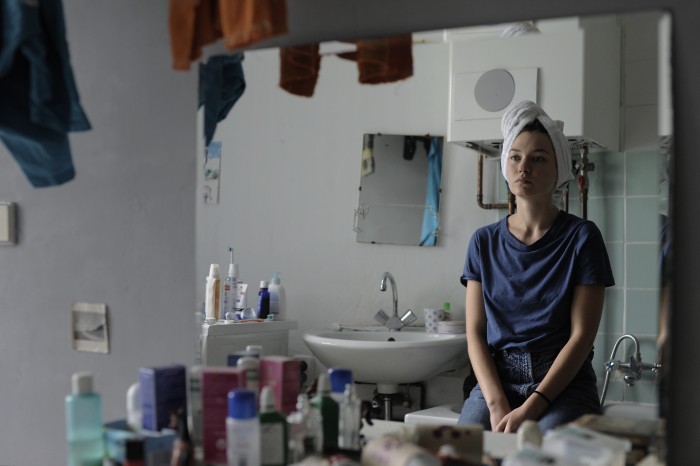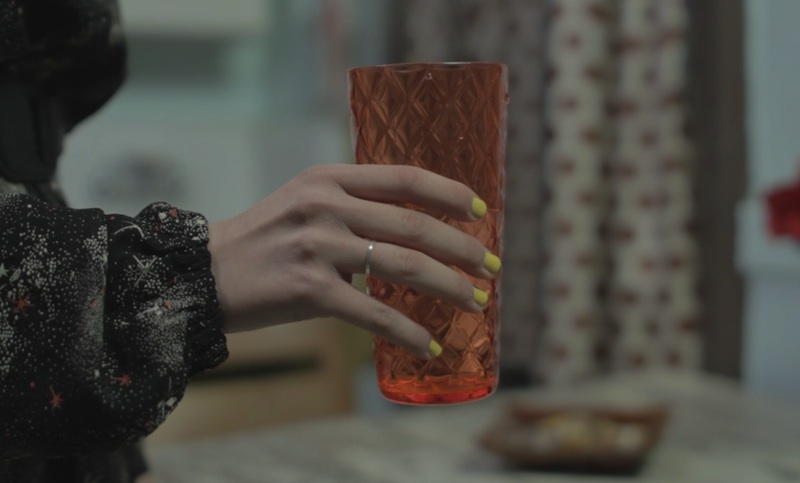By providing your information, you agree to our Terms of Use and our Privacy Policy. We use vendors that may also process your information to help provide our services. This site is protected by reCAPTCHA Enterprise and the Google Privacy Policy and Terms of Service apply.
Attention, Filmmakers: Here’s Why You Should Make Medium-Length Films
Sarah Salovaara

Most audiences think of the feature-length film as 90 minutes or longer. The 30-50 minute “medium length” film has proved something of a conundrum for the American festival and distribution landscape.
But filmmakers who work within those restrictions have found plenty of benefits.
READ MORE: Tribeca: ‘High Maintenance’ Creators on Short Filmmaking Opportunities Online
“I don’t know about you,” said Matt Porterfield, when discussing his new 30-minute film “Take What You Can Carry,” “but I’ve always thought of my days as made up of half-hour segments, not hours. It’s a valuable unit of time.”
Regardless of the quality of these long shorts or short features, their chances for maximal visibility are almost immediately diminished from the moment the edit is locked. Programmers must resort to knocking out three or four other contenders to wedge a medium-length film into a shorts block, while acquisition offers remain slimmer than the already negligible pool for more conventionally timed shorts. And yet some of the most exciting work from American independent filmmakers is being produced in this format.
Indiewire spoke with medium-length purveyors Porterfield, Scott Cummings, Jodie Mack, Ignatiy Vishnevetsky and Lev Kalman and Whitney Horn to gauge the creative benefits, distribution possibilities and occasional setbacks that accompany a piece of work that falls in and around the 30-minute no man’s land.
Room to Experiment (or Not)
Before the feature-length “L For Leisure,” which will be released next month at the Made in NY Media Center by IFP, Lev Kalman and Whitney Horn made a 48-minute film called “Blondes in the Jungle.” According to Kalman, the length was the very first thing the pair decided upon when conceiving the film, largely because of the “‘what-the-fuck’ factor.”
“With medium-length, audiences don’t have a pre-built set of expectations about pacing and structure,” said Kalman. “You can keep people surprised and guessing the whole time without exhausting their excitement. With shorts, there’s the notion that the film should be economical, to the point. We wanted to be luxurious and generous with time.”
On the other side of the spectrum, Porterfield argued that the running time necessitates “structural rigor,” simply because, “you have the opportunity to bore people, for better or for worse.” Working from a four-page treatment, Porterfield didn’t settle on the running time for “Take What You Can Carry” until the editing room, where it began to present itself as “a triptych, with three equal sections, each ten minutes in length.”

Programming Difficulties
One of the trickiest aspects of making a medium length piece, the filmmakers agreed, is getting it seen. Porterfield conceded that a handful of festivals who played his feature films were reluctant to screen his latest, while Scott Cummings suggested an overall irregularity in the presentation of his 30-minute “Buffalo Juggalos.”
“Some festivals programmed it in a shorts block, sometimes it played with a feature, and in a few cases, it played as a standalone film,” he said. “It is a tricky film to program and I certainly shot myself in the foot with the length in the United States. I was told point blank by several major festivals that the length is why the film didn’t play. But I understand where they’re coming from on a curatorial level and that was something I had anticipated from conception.”
The unexpected silver lining was its reception in Europe, at festivals like Visions du Réel, where Cummings said, “most of the [competition] shorts tended to be around 30 minutes.” (Curiously enough, there’s even a Brive European Medium-Length Film festival in France, where the Oscar-nominated short “Joanna” took home the Audience Award in 2014.)
 If you’re the experimental animator Jodie Mack, with a rather sizable shorts catalogue, you can solve that problem by building your own program. Mack typically paired her 41-minute musical “Dusty Stacks of Mom: The Poster Project” with four other shorts (“New Fancy Foils,” “Undertone Overture,” “Glistening Thrills” and “Let Your Light Shine”), bringing the block’s running time to 75 minutes. Together, she felt the films played as “an animation variety show,” thereby assuaging her worries about Dusty Stacks’ standalone length.
If you’re the experimental animator Jodie Mack, with a rather sizable shorts catalogue, you can solve that problem by building your own program. Mack typically paired her 41-minute musical “Dusty Stacks of Mom: The Poster Project” with four other shorts (“New Fancy Foils,” “Undertone Overture,” “Glistening Thrills” and “Let Your Light Shine”), bringing the block’s running time to 75 minutes. Together, she felt the films played as “an animation variety show,” thereby assuaging her worries about Dusty Stacks’ standalone length.
On the other hand, Ignatiy Vishnevetsky, who considers his 40-minute “Ellie Lumme” to be a “novella in movie form,” believes that the film’s length is ultimately what gave it legs in setting it apart from the crowded shorts field. The 2013 film is still on the festival circuit. “The funny thing is that its had a very long life,” he said. “It wasn’t supposed to be a calling card or anything; it’s like this thing that keeps following me around.”

Release Prospects
As far as distribution goes, most of the filmmakers appear unfazed by the potential prospects, largely due to the proliferation of online platforms.
“Since we’re no longer looking at theatrical distribution as the primary way to release a film, the codified idea of the ‘short’ and ‘feature’ is dated,” said Cummings, who plans to self-release “Buffalo Juggalos” online for a small fee. “You can, and should, just do what you want.”
Mack, who, like Cummings, was named one of Filmmaker Magazine’s 25 New Faces on the basis of her medium-length film, has no plans to formally release “Dusty Stacks of Mom” since her supplemental live performance was a significant part of the viewing experience. That, and she’s already on to a handful of other projects.
Reflecting on the unreleased 2009 “Blondes,” Kalman feels like new opportunities have arisen for medium-length films that should encourage anyone who wishes to take a stab at them. “Things seemed different five years ago,” he said. “At that time, we thought pairing the film with a short was the only viable option for release.
But now, as VOD and micro-cinemas are more often the venues for unconventional films, hitting that 90-minute mark doesn’t seem as important. Especially with art films, I don’t think people complain too much if they’re no longer than a Law & Order.” Kalman said that “Blondes in the Jungle” will be available on MUBI beginning in May.
As part of his modest $4000 crowdfunding campaign, Vishnevetsky promised backers the opportunity to arrange their own screenings with a provided DCP or Blu-Ray. For him, that collaboration alone is the movie’s future, as he moves on to preparing for his next film.
Though traditional theatrical routes can take a back seat to the makers of medium length films, the horizon certainly broadens when you’ve got a few features under your belt. In May, the art-house Austrian distributor Stadkino will give “Take What You Can Carry” a theatrical run on a double bill with Apitchatpong Weerasethakul’s 60-minute “Mekong Hotel.” Porterfield is eager to find more opportunities like this, and mentioned that he is targeting museums and cinemas that have been supportive of his work in the past. “Maybe we will present it as an installation,” he offered. “Then maybe we will bury it for 15 years.”
READ MORE: Here’s Why You Shouldn’t Ignore Short Films at Festivals
By providing your information, you agree to our Terms of Use and our Privacy Policy. We use vendors that may also process your information to help provide our services. This site is protected by reCAPTCHA Enterprise and the Google Privacy Policy and Terms of Service apply.

















